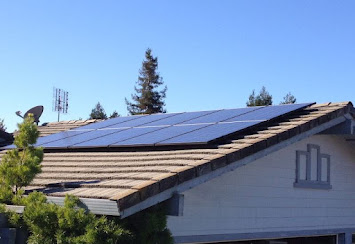The Ultimate Guide to Solar Install: What You Need to Know Before Going Solar
As energy prices rise and the effects of climate change become more apparent, more homeowners and businesses are turning to renewable energy. One of the most popular and accessible options today is solar power. If you're considering a solar install, it's important to understand the process, benefits, and factors that go into making your solar investment worthwhile.
What Is a Solar Install?
A solar install refers to the process of setting up a photovoltaic (PV) system that captures sunlight and converts it into electricity. The typical system includes solar panels, an inverter, mounting hardware, and often a battery for energy storage. Installations can be grid-tied (connected to the utility grid), off-grid, or hybrid.
Whether you're powering a single-family home or a commercial building, the installation process generally involves planning, site evaluation, permitting, and the physical mounting of the system.
Why Choose Solar Energy?
Before diving into a solar install, it's important to understand why solar energy is a smart choice:
- Lower Energy Bills: One of the biggest benefits of a solar install is the immediate reduction in your electricity bill. In many cases, homes can generate enough energy to offset most or all of their electricity costs.
- Sustainable Energy: Solar power is a clean, renewable source of energy that helps reduce your carbon footprint.
- Increased Property Value: Studies show that homes with solar panels often sell for more, and more quickly, than those without.
- Incentives and Rebates: Federal, state, and local governments offer tax credits, rebates, and other incentives to help reduce the cost of installing solar panels.
The Solar Install Process
A successful solar install involves several steps. Understanding each phase will help you set realistic expectations and ensure a smooth experience.
1. Site Assessment
A professional installer will evaluate your roof or property to determine how much sunlight it receives and whether it's suitable for solar panels. Factors like roof angle, shading from trees or buildings, and structural condition are all considered.
2. System Design
Based on your energy needs and the assessment, the installer will design a customized system. This includes choosing the type and number of panels, as well as any additional components like batteries or smart inverters.
3. Permitting
Before the solar install begins, you'll need the proper permits. Your installer typically handles this, working with local authorities to get the necessary approvals.
4. Installation
This phase usually takes one to three days, depending on system size and complexity. The panels are mounted, the inverter is installed, and wiring is connected. After installation, the system is inspected and connected to the grid if applicable.
5. Inspection and Activation
Once installed, the system must pass a final inspection before it can be turned on. After that, you're ready to start generating your own electricity.
Choosing the Right Solar Installer
Not all companies are created equal. When planning your solar install, it’s crucial to work with experienced, certified professionals. Look for:
- NABCEP certification (North American Board of Certified Energy Practitioners)
- Good customer reviews and references
- Clear warranty information
- Transparent pricing and financing options
You should also get multiple quotes to compare options and avoid overpriced or underpowered systems.
Common Questions About Solar Installations
How long do solar panels last?
Most panels come with a 25- to 30-year warranty, but they can continue
producing electricity beyond that period with reduced efficiency.
Can I install solar panels myself?
While DIY solar kits exist, a professional solar install is recommended
for safety, code compliance, and warranty protection.
What happens during cloudy days or at night?
Your system won’t produce electricity at night and will generate less on cloudy
days. However, grid-tied systems allow you to draw power from the grid when
needed and send excess energy back during peak production hours.
Conclusion
A solar install is more than just a home improvement—it's a smart investment in your future. By switching to solar energy, you're taking a step toward energy independence, environmental responsibility, and long-term savings. With careful planning and the right installer, the process can be smooth and rewarding.
Whether you're motivated by cost savings, sustainability, or increasing your property's value, now is a great time to explore what a solar install can do for you.Call (866) 926-9997 or email sales@highlightsolar.com.


Comments
Post a Comment